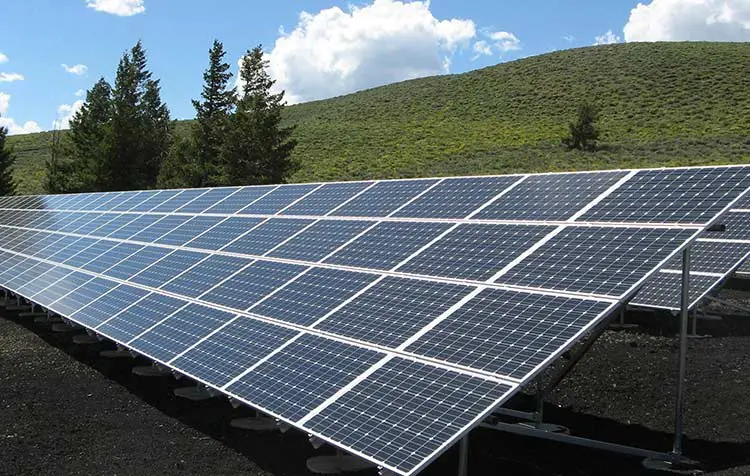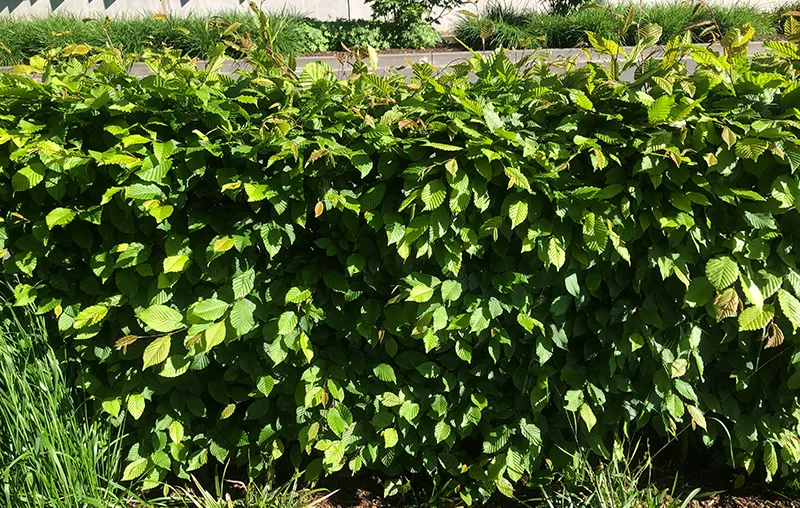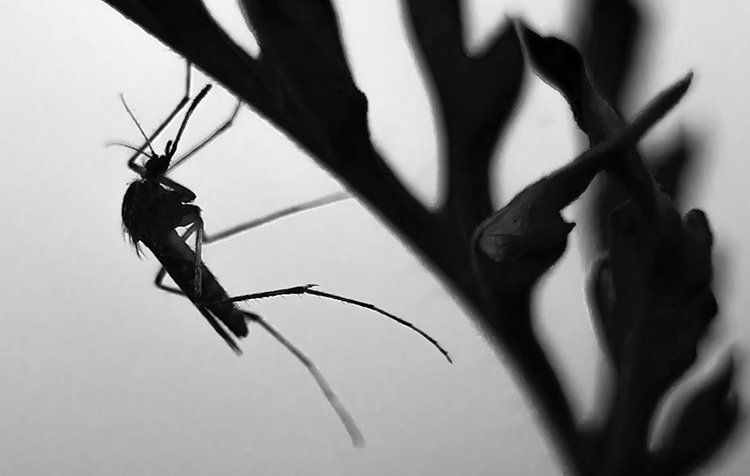What is vegan power and what is Green electricity? We will clarify this question in this article. The way we live decides our future and that of future generations. Therefore, more and more people today decide to live vegan. No wonder, considering how much in recent years the damage to the environment has increased, as well as the resulting disasters dominate more and more our news. Have you ever thought about it?
A vegan lifestyle can be more than just avoiding animal products when eating. What if electricity was vegan too? The good news is: vegan electricity is easy to get in Germany. And gas is not only available in an ecological, but also vegan version.
So it's time to look at the question of what exactly makes electricity vegan. What is the difference between ecological and vegan and what exactly do we get out of it? Vegan electricity as an alternative - does it work?
Here is another short Table of contents about the article for you:
- Where does our electricity come from?
- Solar energy - photovoltaics as an alternative?
- Green electricity is not the same as vegan electricity
- What is vegan electricity?
- Is there vegan gas as well as vegan electricity?
- How sugar beet pulp can change the world
- Vegan electricity as an ecological alternative
Where has our electricity come from so far?
Energy is an important topic. Rising population figures also mean a rising demand for energy. But where do we get it from? Fossil resources are almost used up, and what's more, the energy derived from them is not good for the environment. When you think of electricity, you probably first think of all the many nice things that make our everyday lives easier with a simple cable in the socket. Zack, plug it in and life becomes a little bit easier. But do you think further than your own power socket? And when you think about the creation of energy, what images pop into your head? Huge smoking chimneys and nuclear power plants come to mind first. Scary, isn't it?
These methods are not only harmful to people and the environment in the present, they also pose problems for us in the future. Air pollution, species extinction and the big question of a final solution for nuclear waste storage are real nightmares. Wind and water power are better, or are they? These are touted as bioelectricity and green power, and yes, admittedly, they are cleaner than nuclear and coal power, and their generation is climate-neutral. However, the rotors and turbines pose a threat to birds and fish.
Solar energy - photovoltaics as an alternative?
But there is another solution that has experienced a real boom in recent years, but seems more like a one-off to most people: photovoltaic systems. These convert the sun's rays into energy, which then flows through our electrical outlets. You can already find these large dark panels on many roofs. These are small solar systems that supply individual houses with heat and electricity and whose surplus energy can be fed into the general grid. If you don't have your own house and therefore don't have your own small power plant, you need a reliable external provider.
In addition to the old familiar ones, there is also already photovoltaics on a large scale. Here, large solar power plants are used to collect heat via thermal solar systems or solar energy via large parabolic mirrors, which is then converted into electricity in thermal power plants. But how do you know this energy is vegan? To answer this question, we must first clarify what is ecological electricity and what is vegan electricity.
Green electricity is not the same as vegan electricity
We refer to so-called renewable energies as ecological, i.e. those that are available to us in unlimited quantities. In general, we also like to talk about green electricity. This is obtained through wind in large wind farms, in the Water in the so-called offshore plants, by sun in the solar power plants or by the so-called biomass, i.e. the organic waste. As with coal and nuclear power, electricity is generated by biomass using the combustion principle: large turbines are driven by steam, the motion of which is then converted into energy. Wherever there is combustion, exhaust gases are always produced.
So although biomass is sustainable in terms of raw materials, it is not climate-neutral. In addition, biomass is also often based on waste from factory farming. Thus this energy production is also not vegan! Also wind and water affect the animal world negatively, as you could already read above. Thus they are also no representatives of vegan energy.
What is vegan electricity?
Vegan electricity is called only that whose extraction does not affect the environment, as is the case with nuclear and coal, nor pose a threat to wildlife. Because that is exactly the difference between ecologically obtained and vegan electricity. Vegan electricity has taken the claim of sustainability a step further than its ecological competitors in the field of green electricity and green gas. Photovoltaic systems have the great advantage that, quite casually, they just stand there and absorb the sun's rays. No dangerous rotations, no emission of exhaust gases and above all no final storage! The plants are manufactured in addition still in Europe and are set up.
The high standards that apply here are additionally in the interests of the environment. Photovoltaic systems are thus climate-neutral, vegan and harmless to the local wildlife. Of course, one can now also ask the critical question about the construction. The large solar panels of the photovoltaic systems must also be set up. Not everyone can mount his own system on the roof. But in contrast to the rotors and turbines of wind and water power, there is no danger to wildlife. Also a noise nuisance, as it is often described by residents with wind turbines, is excluded with solar energy.
Is there vegan gas as well as vegan electricity?
In the extraction of gas, as with electricity, man has come up with some very destructive measures. Natural gas is imported from abroad via long pipelines. The natural gas that is certified as climate-neutral, which you may have read about, is CO2-neutral, but this gas also comes to Germany through pipelines. The construction of these pipelines also has an impact on the habitat of animals on land and in the water. You've probably also heard of fracking. This is a very controversial method in which a mixture of water and chemicals is pumped into layers of rock to break them up. The effects of fracking are devastating to nature and wildlife. Groundwater is contaminated by the chemicals, causing widespread damage to the environment. Animals as well as plants die.
For this reason, the Water Resources Act was tightened in Germany in February 2017, and fracking projects that serve a conventional purpose are subject to an environmental impact assessment in which the public is also involved (you can find more details on this at the Federal Environment Agency). However, these processes still cause damage to the environment. Biogas can be an alternative here, because biogas is climate neutral. One could get the idea that this gas could be vegan. Unfortunately, animal waste from factory farming is used in the production process, even if this is only a part. So in order for gas to be not only eco-gas, but vegan, it is imperative that animal products be eliminated in the production process.
How sugar beet pulp can change the world
Biogas plants have grown steadily in recent years. Gas is produced in these plants from plant and animal waste. Corn from specially planted fields is often used as the main plant-based ingredient, or sugar beet pulp. Sugar beet pulp is the residue left over from sugar production. After the sugar has been dissolved out in hot water, the residues are in many cases compressed into pressed pulp or pellets, i.e. feed for animals. These are then fed to factory farms or burned together with animal waste in biogas plants.
This means that we are already partly on the right path to vegan gas. If one does without the animal waste in the biogas plants and uses only the sugar beet pulp, then vegan gas can be won thus. The current and gas offerer vegawatt already united with a manufacturer, who operates its biogas plant exclusively with sugar beetpulp and does completely without animal biomass. It is therefore always worth asking which "ingredients" are in your electricity. As you can see, sometimes it's just a small step.
Vegan electricity as an ecological alternative
So it can work! Vegan electricity can be a real alternative to conventional and green electricity. This sets the course for a better, more environmentally friendly and therefore less polluted future. To achieve this, it is important to check exactly in which way a provider produces its electricity. Do you know what kind of energy production your provider has chosen? Terms such as green electricity are not legally protected and thus offer no security. As with food, it is advisable to take a look at the contents. You may already be with a provider like vegawatt, which uses solar technology as its main source of energy generation. Vegawatt has already committed to 100% vegan electricity and gas as a provider, offering pure solar energy and vegan gas. Solar technology is a technology of the future, because it offers the possibility to provide enough electricity without harming nature. And it has the advantage that solar energy can be used everywhere in the world. If you want your energy to be produced in a vegan way in the future, make sure that the provider produces its energy exclusively via solar power plants and thus via solar energy.
Best regards
Nadine
PS: Do you live vegan yourself? In the article Vegan lifestyle you get all the tips you need!







Interesting. I've never heard of the distinction between green power and vegan power. And apart from the climate aspect, honestly never thought about the impact of renewable energy on animals. We have our own photovoltaic system on the roof, which we use to power our infrared electric heating, among other things. That would be an example of green and vegan electricity, wouldn't it?
Hi Eva! Thanks for your comment! Exactly 🙂
Many greetings
Christoph
Hello Nadine,
A very informative article, thank you very much. What surprises me, however, is that the negative sides are listed for all options but not for photovoltaics. Of course, there is no noise and exhaust fumes and there is no danger that animals are injured by rotior blades. But one should, I think, consider that it needs huge areas, which are not necessarily only the roofs of houses, to be set up. And I cannot imagine, with the population density today, with the best will in the world that only surfaces are used for it, which nobody needs anyway. I think, also surfaces are used, which served originally perhaps the cultivation of food, or it for the climate and the animal and plant world important green surfaces are cleared. And there were times when houses on which photovoltaic systems were mounted were not extinguished by the fire department because it was too dangerous. I think one should include also such facts into its considerations which river is good and which demonized belongs with. Vg Christine
Comments are closed.